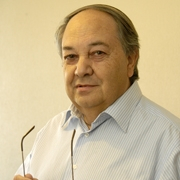
R B Maccioni
University of Chile, Chile
Title: The neuroimmunomodulation theory of Alzheimer´s disease
Biography
Biography: R B Maccioni
Abstract
Alzheimer’s disease (AD) is a progressive neurodegenerative disease, the most common cause of dementia in senile population, characterized by behavioral disorders, loss of memory and cognitive impairment. According to the World Health Organization, AD represents around 12% of people over 65 worldwide. On the basis of the two main protein aggregates, neurofibrillary tangles (NFT) and amyloid plaques (AP), several attempts to explain the genesis of the disease have been proposed. Current research indicates that pathological hyperphosphorylated forms of the microtubule-associated protein tau, is the main precursor for AD onset, with a paramount molecular mechanism based on neuroinflammatory processes. We have postulated the neuroimmunomodulation theory. In this context, microglial cells that play preponderant roles in innate immunity are the main source of proinflammatory factors in the brain. Microglial activation triggers alterations in the cross-talks between microglia and neuronal cells in AD pathogenesis. This activation depends on the type, intensity and context of the stimulus. In neurodegenerative diseases such as AD, a persistently active microglial condition could generate neuronal damage, with a consequent death of neuronal cells, causing the release of pathological tau toward the extracellular environment. Released tau would subsequently cause the activation of microglial cells,
promoting a feedback mechanism and generating a continuous cellular damage. After activation of microglia is induced, generation of NF-kB occurs, thus promoting the expression and release of proinflammatory cytokines, such as interleukin-1β (IL-1β), interleukin-6 (IL-6), interleukin-12 (IL-12), interleukin-18 (IL-18), interferon gamma (IFN-γ) and tumor necrosis factor alpha (TNF-α). As a consequence, short-lived cytotoxic factors, such as superoxide radicals (O2), nitric oxide (NO) and other reactive oxygen species (ROS), are released. In normal physiological conditions, tau’s kinases have a role in regulating normal functions of tau. Pathological tau hyperphosphorylations by the p35-activated cyclin-dependent kinase 5 system (Cdk5) reduce tau-microtubule interaction, downregulating tau function in microtubule stabilization and axonal transport. On the other hand, glycogen synthase kinase 3-beta (GSK3β)-mediated tau phosphorylation promotes N-methyl-D aspartate receptor (NMDAr)-mediated long-term depression (LTD). It has been shown that increasing the release of proinflammatory cytokines during AD by microglia leads to an increase in kinase expression and activity of both Cdk-5 and GSK3-β. On the other hand, TNF-α and IL-8 increase expression and kinase activity of Cdk5, whereas IL-1β hyperactivates GSK3-β, leading to tau hyperphosphorylations. These result in microtubule destabilization, impaired axonal transport, NMDAr-mediated neurotoxicity, synaptic dysfunction and finally in cell death. Finally, the previously summarized mechanisms could explain the onset and progression of AD, opening a new projection to focus research on therapeutic agents that could modulate the interactions between tau and microglial cells. The neuroimmunomodulation mechanisms have been the basis toward the search of innovative therapeutic approaches for AD using tau as a main target.

